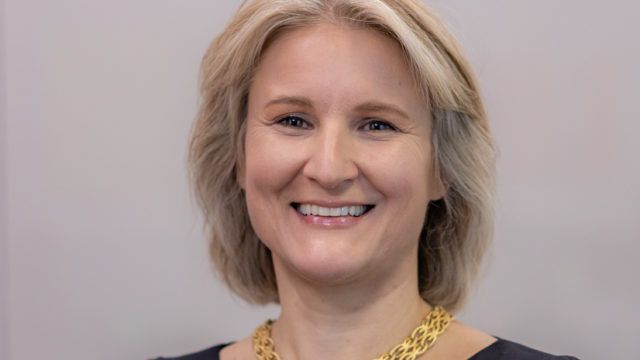In its investor presentation booklet, the Muzinich Enhancedyield Short-Term Fund is described as “a short duration crossover strategy blending investment grade with high yield corporate bonds, designed to enhance yield while mitigating risk”.
“But, basically, it is a ‘vanilla’ corporate bond fund,” Tajana Greil-Castro, the fund’s portfolio manager and a director at Muzinich, told FSA on a recent visit to Hong Kong.
“We don’t use leverage or derivatives to ramp up the yield, nor do we invest in [bond-equity] hybrids, such as Co-Cos [contingent convertible bonds issued by banks] due to their higher credit and extension risk as well as their greater volatility.”
“Our investors’ preference is for a ‘cash-plus-plus’ type of fund. That is, a portfolio with the low volatility and high liquidity of a money market fund, but that maximises yield-carry [spread or excess yield over government bill and bond] through credit analysis,” she said.
The $11.67bn fund was incepted in November 2003 and is authorised for sale in Singapore to private banks and accredited high net-worth investors.
Its gross annualised return since inception is 3.83% (3.20% net of expenses and fees), according to the fund’s factsheet, compared with 1.72% annualised return by its benchmark, the BofA Merrill Lynch German Government Bond (1-3 year) index.
However its 6.91% three-year cumulative performance is less than the global corporate bond sector average, according to FE Analytics, but so is the fund’s annualised volatility, which is only 1.45%.
Muzinich Enhancedyield Short-Term Fund portfolio characteristics
| Distribution yield |
3.5% |
| 3-year annualised (gross) return* |
2.08% |
| 3-year annualised (net) return* |
1.56% |
| 3-year annualised volatility* |
1.45% |
| Sharpe ratio |
1.45 |
| Average credit rating |
BBB- |
| Yield to worst* |
1.80% |
| Duration to worst (yrs) |
2.04 |
| Spread to worst (bps) |
251 |
| Average coupon |
3.68% |
| Average price |
101.21 |
Source: Fund factsheet, 31 May 2019. *Euro (base currency) unit class
Greil-Castro believes the fund’s strategy is a better “alternative to those funds that invest in very short-duration, high yield bonds” because there is less credit risk.
“Sub-investment grade bonds can provide high yields but they are typically speculative, and issuers are more vulnerable to liquidity or refinancing difficulties,” she said.
Nevertheless, the fund can invest up to 40% of its assets in “junk bonds”, but its current exposure is 25% and falling.
“Reliable cash flow in order to service their debt is a critical factor for many high yield borrowers. Increasing economic uncertainty, with indications of a global slowdown, as well as greater asset price volatility led us to start reducing credit risk about 18 months ago,” said Greil-Castro.
Among investment grade bonds, issues denominated in euros for similar credits tend to trade at a yield premium , and the fund has had an average weight of 65% to Western Europe since inception. Financials, especially banks, comprise about 36% of the current portfolio, and include UBS and Credit Suisse – but also Barclays, Deutsche and Unicredit.
Greil-Castro avoids investment grade bonds that trade on tight spreads due to their name recognition or their preponderant inclusion in benchmark indices. These are mainly A- credits, and the result its that the portfolio tilts towards bonds rated BBB-.
“We believe robust, fundamental research is the long-term driver of attractive, risk-adjusted returns, complemented by ongoing rigorous risk oversight and portfolio monitoring on a daily basis,” she said.
Mitigating risks
“The biggest risk to the fund is that interest rates and government bond yields in developed markets – especially in Europe – are already very low and it is hard to see how they can fall much further.
“The danger is that if credit spreads were to widen, the fund might lack the mitigating boost to returns from falling rates.”
Greil-Castro insisted that liquidity is not a problem for the nearly $12bn sized fund, despite the wide dealing spreads and small volume quotes in the still manually-traded corporate bond market.
“We have strong, deep-rooted relationships with a selected number of [bank] market-makers, with whom we can quietly work single orders worth tens of millions [of euros or dollars] or even several in one day. The market maker will find counter-parties on the other side of our order, or maybe match it with an ETF transaction,” she said.
“There is always liquidity for the right client. Besides, the fund has a cash buffer of $200m – just 1.5% of the fund’s assets – to meet any sudden cash withdrawals.”
Potential mismatches between illiquid holdings by funds that are are vulnerable to daily investor outflows has been highlighted by a series of blow-ups, notably with GAM’s Absolute Return Bond Fund range and Neil Woodford’s Equity Income Fund, from which withdrawals were suddenly suspended earlier this month.
Muzinich Enhancedyield Short-Term Fund vs sector average


















